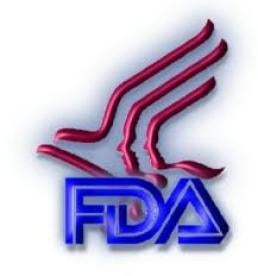The Food and Drug Administration (FDA) recently issued a draft guidance to describe its policy for notifying the public about medical device “emerging signals.” An “emerging signal” is new information about a medical device used in clinical practice that (1) the FDA is monitoring or analyzing, (2) has the potential to impact patient management decisions and/or alter the known benefit-risk profile of the device, (3) has not yet been fully validated or confirmed, and (4) for which the FDA does not yet have specific recommendations.
According to the FDA, at the time a medical device is approved or cleared, it has a benefit-risk profile that health care providers, patients, and consumers use to make treatment decisions. Once a medical device is on the market, new information, including unanticipated problems, may change the benefit-risk profile of a device. Timely communication of such new information may help health care providers, patients, and consumers make informed treatment choices based on the most current available information. The draft guidance document proposes criteria, timeframes, a method of communication, and follow-up for FDA communications for emerging signals.
Criteria
The draft guidance states that FDA considers many factors in the course of evaluating and communicating about medical device emerging signals. These factors may include, but are not limited to, the following:
-
Seriousness of the adverse event(s) (e.g., severity and reversibility) relative to the known benefits of the device
-
Magnitude of the risk (e.g., likelihood of occurrence)
-
Magnitude of the benefit
-
Strength of the evidence of a causal relationship between the use of a device and the adverse event
-
Extent of patient exposure (e.g., how broadly is the device used, is the device still actively manufactured and distributed)
-
Whether there is a disproportionate impact on vulnerable patient populations (e.g., children, pregnant women, elderly, cancer patients, chronically ill, at-home/unmonitored)
-
Potential for preventing, identifying, monitoring or mitigating the risk
-
Availability of alternative therapies
-
Implications for similar or related devices (e.g., multiple models from multiple manufacturers)
-
Anticipated time for completion of initial FDA assessment and development of recommendations
-
Accuracy and availability of information already in the public domain
The draft guidance advises FDA staff to strongly consider public communication about an emerging signal when all of the following statements apply:
-
the information represents a new, potentially causal association, or a new aspect of a known association (e.g., increased rate or severity of event or reduced benefit), between a medical device and one or more adverse events or clinical outcomes;
-
the available information is reliable and supported by sufficient strength of evidence; and
-
the information could have important clinical implications for patient management decisions and/or could it significantly alter the known benefit-risk profile of the device.
Device manufacturers may legitimately be concerned about what the FDA will consider “sufficient” strength of evidence to communicate new information about a device. The data needed to obtain approval or clearance for a device can be substantial. Hopefully, the FDA will not lightly disseminate negative new information based on anecdotes or other inadequate data. There is a suggestion in the draft guidance that at least one purpose of communicating about emerging signals may be to counter anecdotal information spread by social media or other non-scientific sources.
Timing
The draft guidance instructs FDA staff to conduct an initial assessment of the need to communicate about an emerging signal within 30 days of receiving the information.
Method of Communication
The draft guidance includes as an appendix a skeletal template for communications on emerging signals.
Follow-up
In cases where FDA staff decides not to communicate about an emerging signal, the draft guidance recommends that the staff re-evaluate the decision within 30 days of receiving (more) new information.
Further, the draft guidance advises FDA staff to issue updates to the communication on the FDA website at least twice per year, or more often as necessary and appropriate, until either the FDA issues a more formal “Safety Communication” containing specific recommendations or until its evaluation of the signal is otherwise completed and the public is notified of its conclusions.


 i
i


